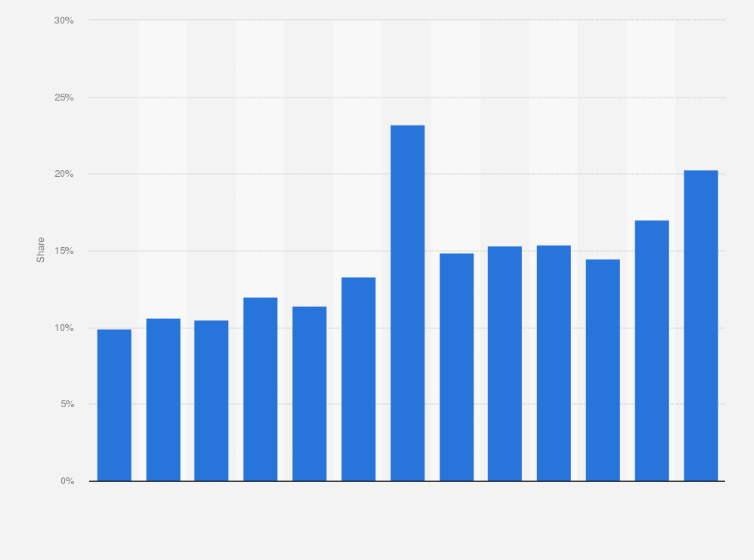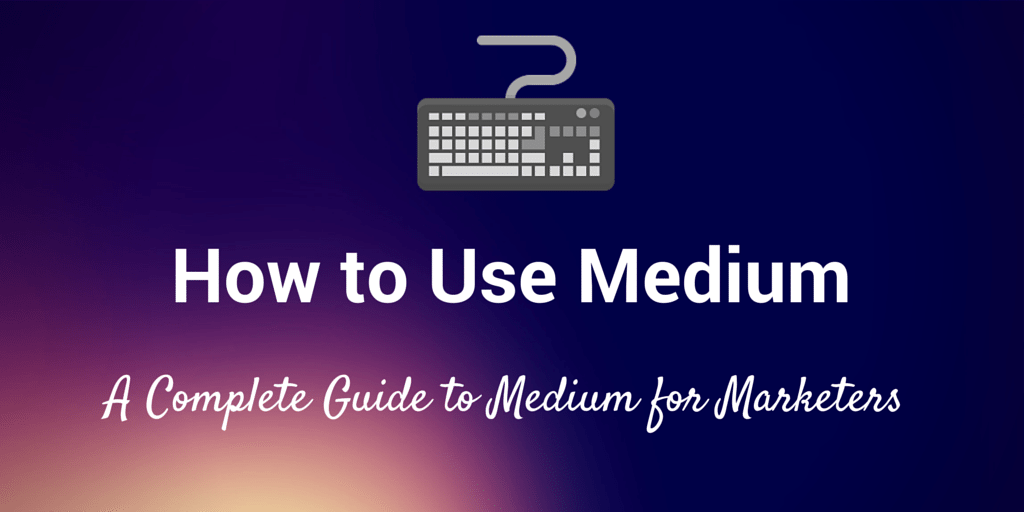Digital Marketing Budget Allocation | 8 Effective Allocation Strategies

Digital marketing budget allocation is the process of strategically distributing your financial resources across various online marketing channels and activities. It involves determining how much to spend on different digital marketing strategies to achieve your business objectives.
Effective budget allocation is crucial for optimizing your return on investment (ROI) in the digital marketing landscape. It ensures that you maximize the impact of your marketing efforts and make data-driven decisions.
The purpose of this blog is to guide you through the intricacies of digital marketing budget allocation. We’ll explore the key factors that influence budget decisions, provide practical steps to allocate your budget wisely, delve into different digital marketing channels, and share real-world case studies and common pitfalls to avoid.
Factors Influencing Digital Marketing Budget Allocation

A. Business Goals and Objectives: Your budget should align with your business goals, whether it’s brand awareness, lead generation, sales, or something else. Clearly defined objectives help in determining how much to allocate to each marketing channel.
B. Target Audience and Buyer Persona: Understanding your target audience and their preferences is vital. Different channels may be more effective in reaching specific demographics, so your budget allocation should reflect these considerations.
C. Industry and Competitive Landscape: Analyzing your industry and competition can provide insights into which marketing channels are more prevalent and effective. It helps you make informed decisions about where to allocate your budget.
D. Digital Marketing Channels and Strategies: Assess the various digital marketing channels available, from SEO to email marketing, and identify which ones align with your goals and audience. This understanding will shape your budget allocation strategy.
Key Steps in Budget Allocation
A. Setting Clear Budget Goals: Start by defining what you want to achieve with your budget. Set specific, measurable, achievable, relevant, and time-bound (SMART) goals to guide your digital marketing budget allocation decisions.
B. Identifying Priorities and Core Strategies: Some channels may be more critical to your objectives. Allocate a larger portion of your budget to these core strategies while keeping flexibility for others.
C. Allocating Budget Across Channels: Based on your goals and audience, decide how much of your budget each channel will receive. Prioritize those that provide the best ROI.
D. Flexible Budgeting for Adaptation: Be prepared to adjust your budget based on the performance of various channels. Flexibility is key to optimizing your strategy.
E. Monitoring and Analysis: Continuously monitor the performance of your marketing efforts. Use analytics and data to refine your budget allocation over time.
Examples and Common Mistakes to Avoid
A. Provide real-world case studies or examples of businesses that have successfully allocated their budgets for digital marketing. Highlight the strategies they used, the results achieved, and the lessons that can be applied to other businesses.
A. Highlight common mistakes in digital marketing budget allocation, such as under investing in key channels, neglecting testing and optimization, not monitoring ROI, and ignoring industry trends. Explain the consequences of these errors and how to avoid them.
Tools and Resources
A. Share digital marketing budget calculators and templates that readers can use to plan their digital marketing budget allocation. Recommend books, articles, courses, and software or tools that can help with budget management.
Call to Action
- Invite readers to share their thoughts, experiences, or questions in the comments section, fostering engagement and discussion.
- Promote your services or products related to digital marketing budgeting, providing a clear call to action for interested readers.
- Provide links to other relevant blog posts or resources on your website to keep readers engaged and exploring further.
Optimizing Your Digital Marketing Budget: Effective Allocation Strategies
The success of any digital marketing campaign hinges on how effectively the budget is allocated. Budget allocation plays a crucial role in determining the return on investment (ROI) and overall success of your marketing efforts. It is not just about having a large budget; it’s about strategically distributing that budget to achieve the best possible outcomes.
Optimizing your digital marketing budget allocation is essential for several reasons. First and foremost, it ensures that your resources are utilized efficiently and effectively, maximizing the impact of your marketing efforts. By allocating the budget strategically, you can focus on the channels and tactics that deliver the highest ROI, thereby optimizing your marketing performance.
A strategic approach to budget allocation is imperative because it allows you to align your marketing goals with your financial resources. Without proper allocation, you risk wasting money on ineffective channels or tactics that do not resonate with your target audience. By taking a strategic approach, you can make data-driven decisions that drive meaningful results and help you achieve your marketing objectives.
In the following sections, we will explore effective strategies for optimizing your digital marketing budget allocation. We will discuss key factors to consider, such as marketing goals, historical data analysis, target audience identification, channel selection, prioritization of tactics, industry trends, testing frameworks, and performance monitoring. By understanding and implementing these strategies, you will be able to make informed decisions and allocate your budget in a way that maximizes your marketing impact.
Remember, digital marketing is not a one-size-fits-all approach, and digital marketing budget allocation should be tailored to your specific business objectives and target audience. With a strategic mindset and a data-driven approach, you can optimize your budget allocation and unlock the full potential of your digital marketing campaigns.
1. Define your marketing goals:
Defining clear and measurable marketing goals is essential for optimizing your digital marketing budget allocation. Setting goals provides direction, helps prioritize activities, and enables measurement and accountability. It influences budget allocation decisions by guiding channel selection and resource allocation.
When setting marketing goals, it’s important to make them specific, measurable, attainable, relevant, and time-bound (SMART). Here are examples of common marketing goals:
- Increasing Website Traffic: Focus on driving more visitors to your website through strategies like SEO, content marketing, social media advertising, and influencer partnerships.
- Generating Leads: Capture contact information from potential customers through tactics like email marketing campaigns, lead magnets, landing page optimization, and targeted advertising.
- Boosting Conversions: Improve the rate at which visitors take desired actions on your website by implementing conversion rate optimization, A/B testing, personalized messaging, and remarketing campaigns.
- Enhancing Brand Awareness: Increase visibility and recognition of your brand among the target audience using social media engagement, influencer marketing, content creation, and public relations efforts.
Understanding your target audience is crucial for the success of your digital marketing campaigns, and it plays a significant role in budget allocation decisions. Here’s why it’s important:
- Relevance and Personalization: By understanding your target audience, you can create marketing messages, content, and offers that resonate with their specific needs, preferences, and pain points. This relevance and personalization increase the effectiveness of your campaigns and improve your chances of achieving your marketing goals.
- Efficient Resource Allocation: Knowing your target audience helps you allocate your budget to the channels and tactics that are most likely to reach and engage them. It prevents wasted resources on channels that do not resonate with your audience and allows you to focus on the areas that deliver the highest returns. By targeting the right audience, you can optimize your digital marketing budget allocation and maximize your marketing impact.
- Improved ROI: When you understand your target audience, you can craft targeted marketing campaigns that have a higher likelihood of converting leads into customers. By allocating your budget to audience segments that have shown a higher propensity to convert, you can maximize your return on investment (ROI) and make the most efficient use of your marketing resources.
To gather audience insights and understand your target audience, consider the following methods:
- Surveys and Questionnaires: Conduct online surveys or questionnaires to gather demographic information, interests, preferences, and feedback from your audience. You can distribute surveys through email, social media, or your website. Tools like Google Forms or SurveyMonkey can help you create and analyze survey responses.
- Customer Interviews: Conduct one-on-one interviews with your existing customers to gain deeper insights into their motivations, pain points, and decision-making processes. These interviews can provide valuable qualitative data that complements quantitative analytics. Consider reaching out to customers through email, phone calls, or in-person interviews, depending on your resources and the nature of your business.
- Social Media Listening: Monitor social media platforms to understand what your target audience is saying about your brand, competitors, and industry. Analyze their conversations, sentiment, and engagement to gain insights into their interests and opinions. Social media listening tools like Hootsuite, Brandwatch, or Sprout Social can help you track and analyze social media conversations related to your brand or industry.
- Website Analytics: Utilize web analytics tools like Google Analytics to gather data on your website visitors. Analyze metrics such as demographics, behavior flow, and conversion rates to understand the characteristics and actions of your audience. This data can provide valuable insights into their preferences and help you allocate your budget effectively.
- Market Research Tools: Utilize market research tools and platforms that provide data on consumer behavior, market trends, and audience segmentation. These tools can provide comprehensive insights into your target audience’s characteristics, interests, and preferences. Examples of market research tools include Nielsen, Ipsos, or Statista.
By investing time and effort in understanding your target audience through audience research, you can make informed decisions about digital marketing budget allocation and tailor your marketing strategies to maximize their impact. Your marketing budget will be allocated to the channels and tactics that are most likely to reach and engage your target audience, leading to better outcomes and improved ROI.
4. Select the most effective marketing channels:

When selecting the most effective marketing channels, it’s important to consider the various digital marketing channels available and align them with your target audience’s preferences and behavior. Here’s an overview of some prominent digital marketing channels and tips for making informed decisions:
- Search Engine Marketing (SEM): SEM involves paid search advertising, commonly known as pay-per-click (PPC) advertising. It allows you to display targeted ads on search engine result pages. SEM is effective for capturing the attention of users actively searching for products or services related to your business. It’s essential to bid on relevant keywords and optimize your ad copy to increase visibility and attract qualified traffic.
- Social Media Advertising: Social media platforms like Facebook, Instagram, Twitter, and LinkedIn offer robust advertising options. Social media advertising allows you to target specific demographics, interests, and behaviors of your audience. It’s crucial to understand which platforms your target audience prefers and spends time on to effectively reach and engage them. Each platform has its own strengths and audience demographics, so choose the ones that align with your target audience.
- Content Marketing: in digital marketing budget allocation, content marketing involves creating and distributing valuable, relevant, and consistent content to attract and retain a clearly defined audience. It includes blog posts, articles, videos, infographics, and more. The success of content marketing depends on understanding your target audience’s preferences for consuming information and leveraging channels like your website, blog, email newsletters, and social media platforms.
- Email Marketing: Email marketing involves sending targeted messages directly to the inboxes of your subscribers. It’s a highly effective channel for nurturing leads, building relationships, and driving conversions. To leverage email marketing effectively, segment your audience based on their preferences and behaviors and personalize your messages accordingly. Quality content, compelling subject lines, and clear calls to action are crucial for success.
- Influencer Marketing: Influencer marketing involves partnering with influential individuals in your industry or niche to promote your products or services. Influencers have established trust and credibility with their followers, making it an effective way to reach and engage your target audience. It’s important to identify influencers whose values align with your brand and whose audience matches your target audience.
When evaluating channel effectiveness and allocating budget accordingly, consider the following tips:
- Set Clear Goals: Clearly define your marketing goals and align them with specific metrics that are relevant to each channel. For example, if your goal is to increase website traffic, you might evaluate the effectiveness of channels based on the number of visitors they drive.
- Track and Analyze Data: Utilize analytics tools to track the performance of different marketing channels. Monitor metrics like conversion rates, click-through rates, engagement, and ROI. Analyze the data to identify which channels are delivering the best results and driving the desired outcomes.
- Test and Experiment: Conduct A/B tests and experiments to compare the performance of different channels. Test variations in messaging, targeting, creative elements, or offers to determine which combinations resonate best with your target audience. Use the insights gained from testing to allocate a budget based on the most effective channels.
- Continuous Optimization: Regularly review and optimize your marketing channels based on the data and insights you gather. Allocate more budget to high-performing channels and consider reducing or reallocating budget from underperforming channels. Continuously monitor and adjust your strategies to ensure you’re maximizing your marketing efforts.
- Customer Feedback and Surveys: Gather feedback from your customers through surveys, customer interviews, or social media listening. Understand their preferences, behaviors, and satisfaction with different marketing channels. Incorporate this feedback into your evaluation process to make informed decisions about digital marketing budget allocation.
By considering your target audience’s preferences and behaviors, tracking data, and continuously evaluating channel effectiveness, you can allocate your budget to the most effective marketing channels and optimize your digital marketing efforts for maximum impact.
5. Prioritize marketing tactics:
Prioritizing marketing tactics is a fundamental strategy in digital marketing, as it enables businesses to make the most of their resources and align their efforts with specific goals. Effective prioritization involves evaluating the relevance, expected impact, and cost-effectiveness of different tactics. Here’s why it’s crucial and examples of common marketing tactics:
Goal Alignment: Prioritizing marketing tactics ensures that your strategies are in sync with your overall objectives. Whether your aim is to boost sales, increase brand awareness, generate leads, or drive website traffic, aligning tactics with your goals allows you to allocate resources to activities that have the most direct impact on achieving those objectives.
Audience Relevance: Different marketing tactics resonate with distinct audience segments. By prioritizing tactics based on your target audience’s preferences, behavior, and preferred communication channels, you can reach them more effectively. This understanding helps you allocate your budget to the tactics that are most likely to engage and convert your audience.
Examples of Common Marketing Tactics:
- SEO Optimization: SEO involves optimizing your website and content to enhance its visibility in search engine results. This tactic drives organic traffic by attracting users actively searching for relevant information or products.
- Email Marketing: Email marketing involves sending targeted messages to your subscribers’ inboxes, nurturing leads, building customer relationships, and driving conversions.
- Content Marketing: Content marketing focuses on creating and distributing valuable, relevant content to attract and engage your audience. It includes blog posts, articles, videos, infographics, and more, helping to establish your brand as a thought leader and drive website traffic.
- Social Media Marketing: Leveraging social media platforms, social media marketing connects with your audience, builds brand awareness, and fosters engagement, making it effective for reaching a broad audience.
- Influencer Partnerships: Collaborating with influential individuals in your industry through influencer marketing helps you tap into their trust and credibility to reach and engage your target audience.
In allocating your budget based on priority and expected impact, you should assess tactics, determine their priority, allocate budget accordingly, and continuously monitor and optimize your strategies. Digital marketing budget allocation isn’t a one-time decision; it’s an ongoing process that requires adaptation as your marketing landscape evolves.
It ensures that resources are invested in strategies that align with your goals and resonate with your target audience, ultimately leading to better results and ROI in the ever-evolving digital marketing landscape.
6. Consider industry trends and competition:

Staying updated with industry trends and conducting competitor analysis are indispensable practices for developing effective marketing strategies. Here’s why they are significant and some tips for their execution:
Industry Trends: Monitoring industry trends is akin to keeping your finger on the pulse of your market. It provides insights into the ever-evolving business landscape, consumer behaviors, and market dynamics. By staying current with industry trends, you gain a competitive edge. Here’s why:
- Anticipating Opportunities: Industry trends allow you to identify emerging opportunities before they become mainstream. This foresight can be invaluable in staying ahead of the competition.
- Adaptation to Consumer Preferences: Consumer preferences and expectations change over time. Staying updated helps you tailor your marketing strategies to align with these shifting needs.
- Competitiveness: In a dynamic marketplace, those who embrace and adapt to industry trends are better equipped to remain competitive and relevant.
Competitor Analysis: Analyzing your competitors’ strategies is akin to having a roadmap of what works and what doesn’t in your industry. It’s more than just keeping tabs on the competition; it’s about learning from their successes and failures. Here’s why it’s crucial:
- Benchmarking: Competitor analysis allows you to measure your performance against industry standards. By understanding where you stand relative to competitors, you can identify areas for improvement and differentiation.
- Learning from Competitor Strategies: Competitors may employ effective marketing tactics that you can incorporate into your strategy. Likewise, understanding their missteps helps you avoid similar pitfalls.
- Gaining a Competitive Edge: By analyzing your competitors, you can identify gaps and opportunities that they may have overlooked. This knowledge can inform your marketing strategies and digital marketing budget allocation for maximum impact.
Tips for implementation:
- Industry Publications and News: Subscribe to industry-specific publications, blogs, and news outlets to stay informed about the latest trends and insights. Attend industry events to network and learn from experts.
- Social Media Listening: Engage with your audience on social media platforms, follow relevant hashtags, and monitor industry-specific groups to listen to conversations and understand consumer sentiment.
- Research Reports and Market Studies: Leverage market research reports and studies from reputable sources to gain comprehensive insights into your industry.
- Competitor Analysis Tools: Utilize tools such as SEMrush or SimilarWeb to dissect your competitors’ online strategies, uncover keywords, and assess their online presence.
- Customer Feedback and Reviews: Pay attention to what customers are saying about your competitors. Their feedback and reviews can reveal valuable insights into areas where competitors excel or fall short.
- SWOT Analysis: Conduct a SWOT analysis of your competitors to systematically evaluate their strengths, weaknesses, opportunities, and threats. This helps you identify areas for differentiation and competitive advantage.
Incorporating these practices into your marketing strategy ensures that your budget allocation is well-informed and aligned with the dynamic nature of your industry.
7. Allocate budgets based on a testing and optimization framework:
Testing and optimization are fundamental to a successful digital marketing strategy. They involve systematic experimentation and refinement of various elements within your marketing campaigns, driven by data and insights. Here’s a breakdown of these concepts, their importance in digital marketing budget allocation, and a framework for implementation:
Testing and Optimization: Testing is the process of creating multiple variations of marketing elements (e.g., ads, landing pages, emails, or CTAs) and comparing their performance to determine which version yields the best results. Optimization, on the other hand, is the practice of making data-driven improvements based on test results to enhance the efficiency and effectiveness of marketing efforts. These practices are essential for uncovering audience preferences, improving conversion rates, and achieving a higher return on investment.
Importance of Budget Allocation for Testing: Allocating a portion of your budget to testing is crucial for several reasons:
- Data-Driven Decision Making: Testing provides valuable data and insights, enabling you to make informed, data-backed decisions rather than relying on assumptions or intuition.
- Continuous Improvement: Digital marketing is dynamic, and consumer preferences evolve. By budgeting for testing, you ensure ongoing optimization to keep pace with changing trends.
- Risk Mitigation: Testing helps reduce the risk of investing a significant portion of your budget in unproven strategies. By validating tactics through testing, you can allocate your budget more efficiently.
Framework for Testing and Optimization:
- Set Clear Goals: Define specific goals and key performance indicators (KPIs) for your campaigns. These metrics might include click-through rates, conversion rates, cost per acquisition, or revenue generated.
- Identify Testing Variables: Determine the critical variables that can influence campaign performance, such as headlines, ad copy, visuals, calls-to-action, landing page design, or targeting parameters. These variables will be the focus of your tests.
- Create Test Variations: Develop multiple versions of the variables to compare their performance. For instance, you could create different ad headlines or test various images in email campaigns.
- Implement A/B Testing: Split your audience or traffic into random segments and expose each segment to different variations of the testing variables. This approach allows you to compare performance and analyze results statistically.
- Gather and Analyze Data: Collect data on the performance of each test variation using analytics tools. Analyze the data to identify statistically significant differences and determine the winning variations.
- Implement Winning Variations: Based on the test results, implement the winning variations that outperform the others. This may involve applying the successful ad copy, landing page design, or email template to your entire audience.
- Iterate and Repeat: Testing and optimization are iterative processes. Continuously monitor campaign performance, gather feedback, and make adjustments based on insights. Repeat the testing process to refine and improve your marketing efforts.
- Scale Up and Expand: Once you’ve identified winning strategies through testing and optimization, consider scaling up your digital marketing budget allocation for these proven tactics to maximize their impact on your marketing campaigns.
By following this testing and optimization framework, you can make data-driven decisions, enhance the effectiveness of your marketing campaigns, and allocate your budget more efficiently to achieve your objectives.
8. Monitor and track performance:
Monitoring and tracking marketing performance is a critical component of any successful digital marketing strategy. Here’s why it’s so important: the key performance indicators (KPIs) to measure and the role of data analytics tools in this process:
Importance of Monitoring and Tracking Performance:
- Performance Evaluation: Regular monitoring and tracking allow you to assess the success of your marketing efforts. It provides insights into which strategies and tactics are generating the desired outcomes and which ones may need adjustments.
- Optimization Opportunities: By monitoring performance, you can identify areas within your campaigns that can be optimized for better results. This process empowers you to make data-driven adjustments, refine targeting, messaging, or creative elements, and ultimately improve the overall effectiveness of your marketing efforts.
- ROI Assessment: Tracking performance enables you to measure the return on investment (ROI) of your marketing activities. This is crucial for understanding the financial impact of your campaigns, including revenue generated, cost per acquisition, customer lifetime value, and more.
- Budget Allocation Decisions: Performance monitoring provides insights into which marketing channels, tactics, or campaigns are delivering the best results. This information guides your digital marketing budget allocation decisions, allowing you to invest more in strategies that are driving positive outcomes and reallocate resources from underperforming areas.
Key Performance Indicators (KPIs) to Measure:
- Conversion Rate: The percentage of users who complete a desired action, such as making a purchase, filling out a form, or subscribing to a newsletter.
- Click-Through Rate (CTR): The percentage of users who click on a specific link or call-to-action compared to the total number of impressions or views.
- Return on Ad Spend (ROAS): The revenue generated from advertising campaigns is divided by the cost of those campaigns.
- Cost per Acquisition (CPA): The average cost to acquire a customer or lead
- Customer Lifetime Value (CLV): The predicted net profit attributed to the entire future relationship with a customer.
- Website Traffic and Engagement: Metrics like the number of visitors to your website, page views, time spent on site, bounce rate, or specific engagement metrics like video views or social media interactions
- Email Metrics: Open rate, click-through rate, conversion rate, unsubscribe rate, or revenue generated from email campaigns.
- Social Media Metrics: Reach, impressions, engagement rate, followers, shares, or comments
- Search Engine Metrics: Keyword rankings, organic search traffic, click-through rate from search results, or bounce rate from organic search.
Role of Data Analytics Tools:
- Data Collection: Data analytics tools gather and consolidate data from various sources, such as websites, social media platforms, email campaigns, and advertising networks. They offer a centralized repository for your marketing performance data.
- Data Analysis: Analytics tools enable you to analyze and interpret the collected data, uncover trends, identify patterns, and gain insights into user behavior and campaign performance. These insights are crucial for data-driven decision-making.
- Reporting: These tools generate reports and dashboards that visualize key metrics and performance indicators. This makes it easier to monitor and track progress over time and share insights with stakeholders.
- Attribution Analysis: Data analytics tools help attribute conversions or actions to specific marketing channels or campaigns. This allows you to understand the effectiveness of each channel in driving desired outcomes and allocate your budget accordingly.
- Forecasting and Predictive Analytics: Advanced analytics tools can provide insights into future performance. This allows you to forecast outcomes, optimize budget allocation, and make informed decisions for future campaigns based on data-driven predictions.
- A/B Testing and Experimentation: Some analytics tools offer built-in features for conducting A/B tests, tracking test variations, and analyzing the results. This empowers you to make data-driven decisions about which variations are more effective and inform optimization strategies.
In conclusion, data analytics tools are essential for optimizing marketing strategies, efficient resource allocation, and improved results. Measuring pertinent KPIs and data interpretation enable informed decision-making for successful campaigns and digital marketing budget allocation.
Conclusion:
Allocating a budget for digital marketing is a crucial process that requires careful planning and adherence to best practices. Here’s an explanation of the 12 best practices outlined:
- Outline Your Sales Funnel: Before allocating your budget, understand your customer’s journey and key touchpoints in the sales funnel. This insight helps prioritize activities that drive conversions.
- List Your Operational Costs: Operational costs like hosting, subscriptions, and fees are essential and should be the first expenses covered. Knowing these costs sets the stage for allocating the remaining budget.
- Review Past Results: Analyzing past campaigns and their success is vital. Identify what worked and what didn’t to make informed decisions about allocating resources.
- List Your Goals: Clearly define your objectives for the year, whether it’s lead generation, conversions, or sales. Your budget should align with these goals.
- Drill Down to the Details: Develop a detailed marketing plan that outlines specific strategies and tactics to achieve your goals. This plan serves as a roadmap for digital marketing budget allocation
- Select the Best Channels: Not all marketing channels are suitable for every business. Choose the channels that align with your brand and evaluate their associated costs.
- Determine the Cost of Marketing Activities: Calculate the costs of running activities within your selected channels. This step ensures that your budget aligns with your marketing plan.
- Scope Out the Competition: Analyze your competitors’ marketing strategies to gain insights into effective channels and campaigns in your industry.
- Create Your Marketing Plan: Build a comprehensive marketing plan that outlines your initiatives, tools, and channels based on your goals.
- Estimate Your Budget: Calculate the costs associated with each marketing activity. Consider both reasonable and exceptional ROI scenarios to finalize your digital marketing budget allocation.
- Make Every Decision Based on Data: Back your budget decisions with data, research, and past performance metrics. This data-driven approach builds trust and confidence in your plan.
- Measure Results: After budget approval, closely monitor spending and results. Assess any discrepancies and incorporate lessons learned into future budget allocations for continuous improvement.
These best practices provide a structured framework for effective digital marketing budget allocation, ensuring that your resources are optimally utilized to achieve your business objectives. Remember, flexibility and adaptability are key, allowing you to refine your budget allocation as the digital landscape evolves.
See More:





